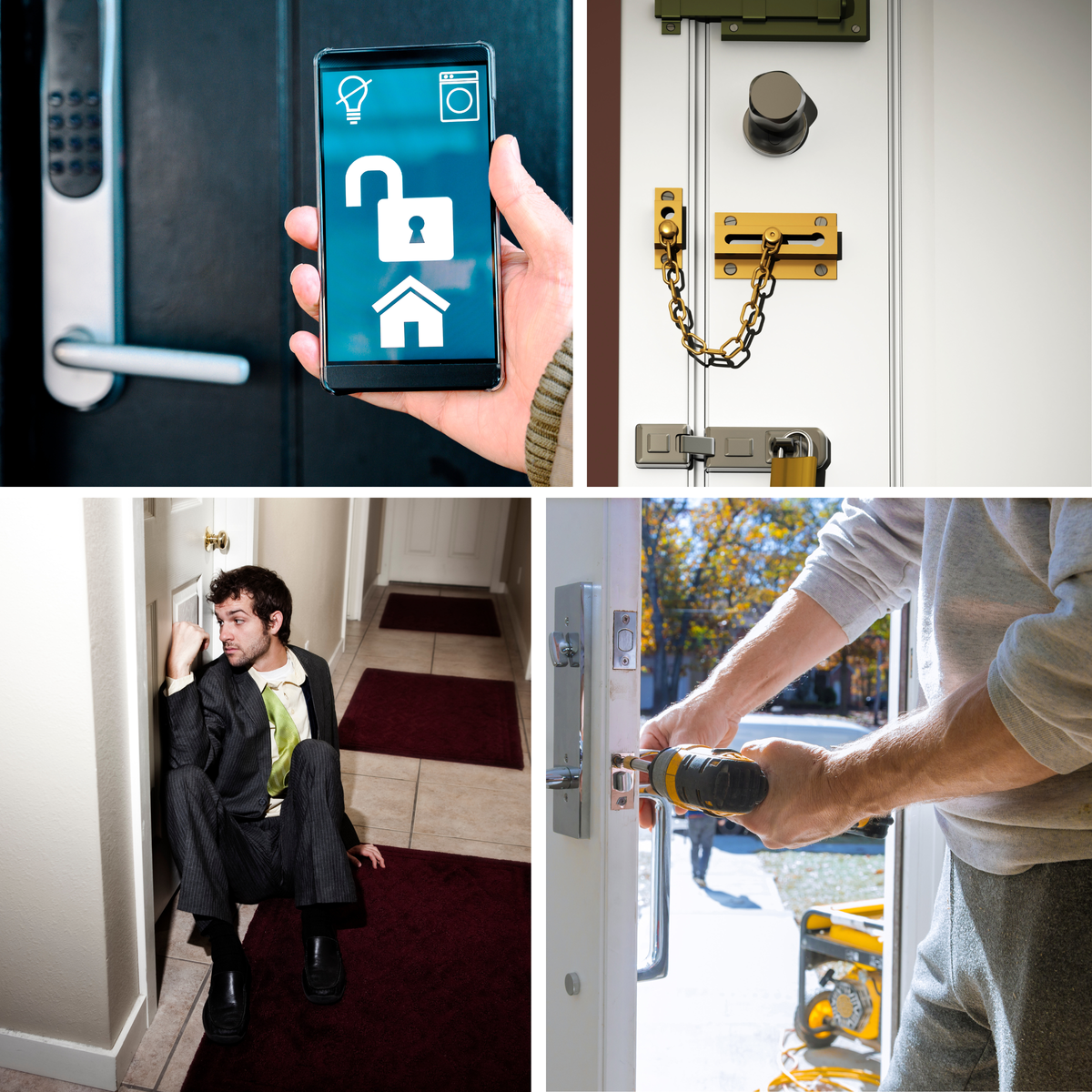Key Takeaways:
- Understanding the implications of a smart lock failure and how to respond.
- Exploring alternative access methods and emergency override features.
- Maintaining smart lock batteries to prevent unexpected failures.
Smart locks have revolutionized home security, offering convenience and innovation at our doorsteps. However, like all electronic devices, they are not immune to failure. In this article, we'll explore what happens if a smart lock fails and how to handle such situations effectively.
When Your Smart Lock Battery Dies
The most common issue with smart locks is a dead battery. Most smart locks will give a low battery warning, often through a flashing light or a notification on your smart lock app. If you miss these warnings and the smart lock battery dies completely, you won't be able to unlock the door remotely or through the keypad door lock. It's crucial to know the battery type your smart lock uses and keep fresh batteries on hand. Some advanced models may allow you to provide temporary power through an external power source or a battery lead to regain access.

Accessing Your Home Without Power
If your smart lock's battery is completely dead, don't panic. Many smart locks come with a physical key option. This traditional keyhole is usually hidden under the lock's cover or a small slot on the door handle. Always keep a backup key in a secure place for such emergencies. If you don't have a physical key, some smart locks offer an emergency lock override feature that you can activate to unlock the door.
Manual Override: The Backup Plan
An emergency lock override is a security feature designed to disable smart locks when electronic methods fail. This could be a physical switch inside the smart lock enclosure or a special access code that you can enter on the keypad door lock. Always refer to the user manual for your specific model to understand how to activate this feature. Remember, using the manual override may require removing the smart lock's cover, so familiarize yourself with the process before an emergency arises.
Recharging and Replacing Smart Lock Batteries
Smart lock batteries vary depending on the model. Some use standard AA or AAA batteries, while others may have rechargeable batteries. To replace, simply open the battery compartment, remove the old batteries, and insert fresh ones. For rechargeable batteries, you might need to remove the battery pack and charge it using a USB cable or a dedicated charger. Always check the user guide for the correct battery type and replacement procedure.

Troubleshooting Smart Lock Glitches
Smart locks, like any sophisticated technology, can sometimes experience glitches that may leave you scratching your head. If you find your smart door lock unresponsive, the first step is to check for simple issues. Ensure that the lock's cover is properly seated and that the contact points are clean. Dust and debris can interfere with the lock's functionality, so a quick clean can sometimes do the trick. Additionally, if your lock is connected to a home automation system, verify that the system itself isn't experiencing any issues.
In the event of a more complex glitch, such as your Google Smart Lock failing to recognize your credentials, a reset might be necessary. Most smart locks come with a reset function that can be triggered by a specific combination of button presses or through the associated app. However, be cautious when performing a reset, as it may revert your lock to factory settings, requiring you to reconfigure your access codes and settings. Always refer to your smart lock's manual for the correct reset procedure to avoid further complications.
Smart Locks vs. Traditional Locks:
A Comparative Insight When considering the reliability of smart locks versus traditional locks, it's important to understand the trade-offs. A traditional lock is purely mechanical, with no reliance on battery power or Wi-Fi connectivity. This means that, barring a physical defect or damage, a traditional lock will not 'die' unexpectedly. However, they do not offer the convenience and features of a smart lock, such as remote access or entry logs.
On the other hand, a smart lock's battery is its lifeline. If the smart lock's battery runs low, you may receive warnings, but if the smart lock dies due to dead batteries, you could be locked out. It's crucial to regularly check the battery level, which is often indicated in the smart lock's app, and replace old batteries promptly. While a smart lock provides advanced features and convenience, it also requires a bit more attention to ensure it remains operational. Balancing these aspects is key when deciding which lock suits your front door best.
Connectivity Issues: When Wireless Signals Fail
Smart locks rely on wireless signals to communicate with connected devices. If there's an issue with your Wi-Fi or the smart lock's wireless signal is blocked by physical obstructions, you may not be able to lock or unlock the door remotely. To troubleshoot, ensure your Wi-Fi is running smoothly and check for anything that might be blocking the signal. Sometimes, simply resetting your router or the smart lock can restore connectivity.

Dealing with Mechanical Failures
Even with a fully charged battery, smart locks can experience mechanical failures. This could be due to wear and tear, faulty components, or physical damage. If the electronic devices within the lock are not functioning, you may need to rely on the physical key to unlock the door. If the mechanical parts are the issue, you may need to contact the manufacturer for further assistance or consider replacing the lock.
Advanced Models: High-Tech Solutions
Advanced models of smart door locks come with additional features to help when a smart lock fails. Some may have a keypad that allows you to enter an access code even when the battery is running low. Others might have a touch-to-open feature that works with a smartphone's wireless signal. Always explore the advanced security features of your smart lock and know how to use them in case of failure.
Preventative Measures: Keeping Your Smart Lock Running
To avoid unexpected lockouts, regularly check your smart lock's battery life. Most smart locks will indicate when the battery is running low, either through the app or on the lock itself. Replace old batteries with fresh ones before they're completely dead, and consider using high-quality batteries for longer life. Additionally, keep the lock's firmware updated to ensure it's running the latest security features and bug fixes.

Summary
Smart lock failures can be inconvenient, but with the right knowledge and preparation, they don't have to be a disaster. Whether it's a dead battery, a connectivity issue, or a mechanical problem, there are a few methods to regain access to your home. Keep backup keys, know your lock's emergency features, and maintain your smart lock to prevent unexpected issues. By understanding what happens if a smart lock fails, you can ensure that your home remains secure and accessible.
FAQ Section
Q: Can I still use my smart lock if there's a Wi-Fi outage?
A: Many smart locks can still function without Wi-Fi, allowing you to use a keypad or a physical key to unlock the door. However, you won't be able to control the lock remotely until the Wi-Fi connection is restored.
Q: What should I do if my smart lock's battery dies and I don't have a physical key?
A: Check if your smart lock has an emergency power option, such as a battery lead or an external power source, to provide temporary power. If not, you may need to contact a locksmith or the manufacturer for assistance.
Q: How often should I replace my smart lock batteries?
A: The frequency of battery replacement will vary depending on usage and battery type. Most smart locks will alert you when the battery is low. It's a good practice to replace the batteries once you receive a low battery notification or at least once a year.










